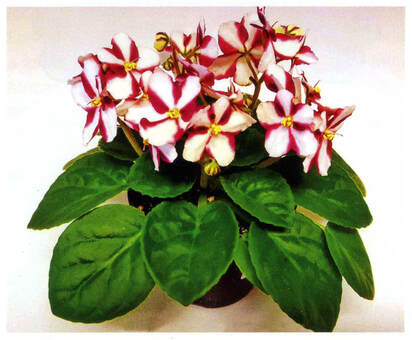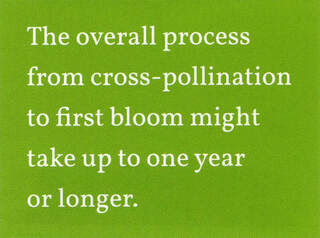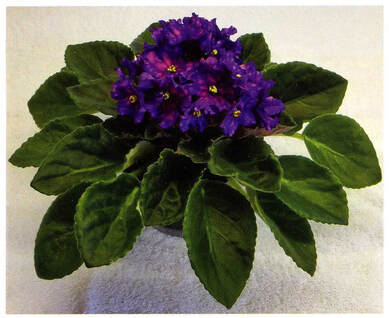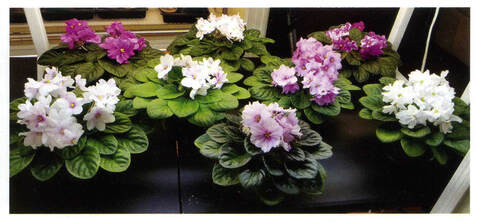|
African Violets - A Hobby for All Ages and Interests
By Jere Trigg Spanish Fort, Alabama First published in the African Violet Society of America magazine |
|
Growing African violets is both challenging and rewarding and is a continuous learning process. It's not strenuous or exceedingly expensive, so the journey can begin for growers at any age and be taken as far as an individual's interest and time allow. Beginners usually concentrate first on growing healthy plants with symmetrical foliage and frequent blooming. They learn about the importance of light, potting mix, fertilizer and other factors critical to the health and appearance of their plants.
|
|
Gaining Confidence Once they have sufficient confidence that they can grow violets successfully, hobbyists become interested in propagating the plants from leaves to share with their friends. Leaf propagation involves an entirely new set of questions to ponder: which leaves are best, how best to plant them, how to separate the babies, etc. After addressing these questions and acquiring experience in producing more violets, some enthusiasts want to concentrate on growing the best quality plants possible to enter in shows and display their beauty. Shows also enable growers to become familiar with new varieties, exchange ideas and meet friends in person they have known previously only through social media. |
|
Taking on Hybridizing
After experiencing the joy of growing beautiful violets, producing copies of their favorites and inter-acting with other enthusiasts at clubs and violet shows, some adventurous hobbyists decide to take on the ultimate challenge — hybridizing. It's not for everybody because it requires time, patience, growing space and discipline. Time is a factor because it takes about 4 months for a seed pod to mature, 2 weeks to 3 months for seeds to germinate after sowing, and 6 months to 1 year from seed germination to first bloom. Most seedlings are different from each other in some way and are attractive but not extraordinary; only about 2 per-cent to 5 percent are truly unique and worth keeping. It requires great discipline to cull out those that have inferior qualities or are too similar to others. |
|
Sometimes, hybridizers choose two blooms that are favorites and perform a cross just to see what will happen. However, they might have a specific goal of producing a superior plant with certain qualities by crossing two parents that possesses such features. For example, Jere's Roll Tide (Photo 1) was developed specifically with the goal of producing a bicolored hybrid that possessed the crimson and white colors of the University of Alabama.
|
|
I developed Jere's Kaleidoscope (Photo 2) with the goal of producing the puff fantasy markings similar to Cosmos Legend 2 but on a Photo 3. Seedlings from violet with stronger leaf stems not requiring leaf support.
The cross-pollination of Jere's Pink Elephant with Rock Star was performed with the goal of producing hybrids with unusually large blooms like their parents but in a variety of bloom colors (Photo 3). With more knowledge and experience, new growers, young or "not so young" will discover over time which path they want to follow, whether it's a few plants in the windowsill, growing to show or hybridizing. But one thing is certain — they will be engaged in a fascinating journey that will likely last for a lifetime! |




